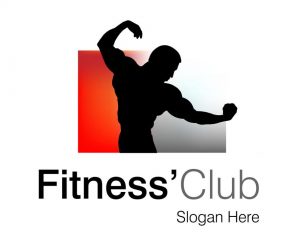Search Engine Optimization is not pseduo-science – it’s exact science. Surprising to many people, SEO can be broken down exactly as can most things computerized or digital. To explain, SEO success comes down to two major categories we will name Internal Ranking Factors and External Ranking Factors. They are defined by name, but to clarify internal ranking factors are the steps you take within your own website to enhance search optimization, and external search ranking factors are the steps taken outside of your website that also affect its search optimization.
Search Engine Presence – Internal Ranking Factors

The first category of determining factors that affect your website’s search engine presence is Internal Ranking Factors. The layout of your website’s pages, including valid coding and amount of relevant text on a page, is a good start point. Next keywords come into play. By filling your site with relevant keywords supported by equally relevant content, you encourage search engines to index your pages and posts according to those keywords. Do a quick search on Google and you will see the search keywords highlighted in the description of each result. It’s easy to see that great usage of these key search terms will result in higher rankings and overall better search engine marketing.
Search Engine Presence – Keywords in Links
“Click here” links are a common mistake amongst all types of websites. While they may help Internet newbies navigate your website, they don’t do a thing for search engines. That’s because the linked words – called “anchor text” – serve as the title for your links when a search engine crawls over your site. So these links – Click to Read More or More Search Engine Optimization Basics – may lead to the exact same place, but the latter is far more likely to come up in a web search, increasing your site’s search engine visibility.

Dusting your paragraphs with keyword phrases may or may not come naturally, but post/page titles are equally important. On top of relevant keywords, the individual post title should display before the website title or even the date. Individual page names should be formatted from pointed keywords. The title of the website itself should also contain keyword phrases that indicate its niche or audience.
Whether or not they link to a new page, images throughout your content should be formatted with “alt” tags which can be crawled by search engines. Meta tags aren’t visible to visitors, but will be eaten up by search engines. Did you know that hidden coding can actually tell Google how to index your site? This invisible coding feeds search engines with your keywords and keyword phrases as well as a brief, well-written description entailing what your site is about.
Meta tags help search engines index your site without being seen my visitors, but another tool is something that makes your website easier to click through for search engines and humans visitors – your site structure. Number of pages, easy-to-maneuver layout, and use of a site map help site visitors check out your various sub pages while easily making their way between pages as well as back to the home page. Back links to the main page (using aforementioned anchor text) allow people as well as search robots to move seamlessly through your content for the best experience and top search engine visibility.
External Ranking Factors
 External ranking factors may seem like they are out of your control, but how many popular sites link to yours, along with your ratings according to page ranking sites, are usually anything but random. Frequently updated content supplemented by site maps and a plethora of in- and outgoing links will help your blog stand out from your competition. While many amateur bloggers begin doing “link exchanges” in hopes of traffic and page rank, the truth is good linking relies on quality, not quantity. Some quality factors include using relevant keywords in anchor text (versus aforementioned “click here” and other nonspecific phrases), the authority (a combination of pagerank and overall popularity) of the referring website where your links appear, and relevance of link placement. Combining these factors guarantees that you will not only gain traffic via links and search ranking results, but the most relevant audience for your niche.
External ranking factors may seem like they are out of your control, but how many popular sites link to yours, along with your ratings according to page ranking sites, are usually anything but random. Frequently updated content supplemented by site maps and a plethora of in- and outgoing links will help your blog stand out from your competition. While many amateur bloggers begin doing “link exchanges” in hopes of traffic and page rank, the truth is good linking relies on quality, not quantity. Some quality factors include using relevant keywords in anchor text (versus aforementioned “click here” and other nonspecific phrases), the authority (a combination of pagerank and overall popularity) of the referring website where your links appear, and relevance of link placement. Combining these factors guarantees that you will not only gain traffic via links and search ranking results, but the most relevant audience for your niche.
Avoid Black Hat Tricks and Scams
A lot of scams and so-called SEO experts will recommend ‘black hat‘ SEO tactics including hidden text and other techniques that trick visitors into clicking irrelevant links. This can actually hurt search ranking position, not to mention making your visitors determined never to visit your site again. Not only is using your relevant, legitimate content to help SEO ‘nicer’ and more honest, it will also pay off better in the long run, with more time spent on your site. Really, it doesn’t matter how many people you attract to your website if they are in no way your target audience.




